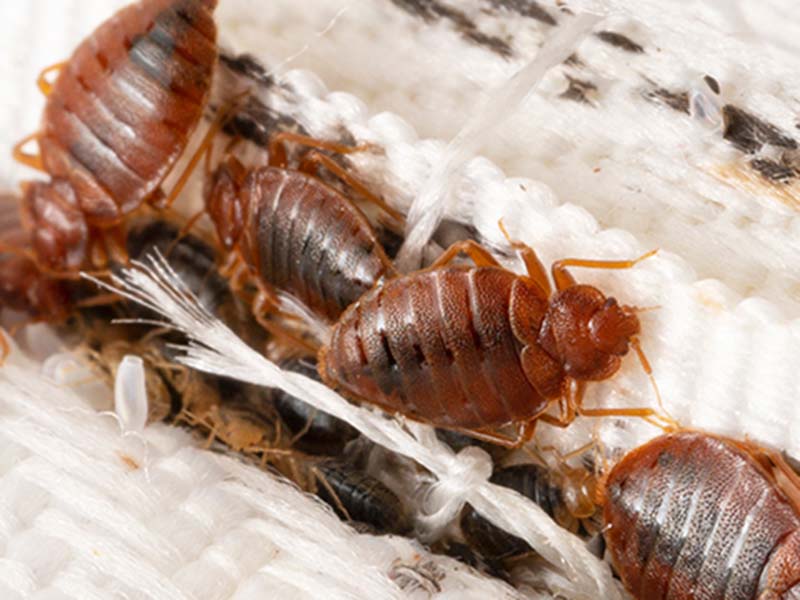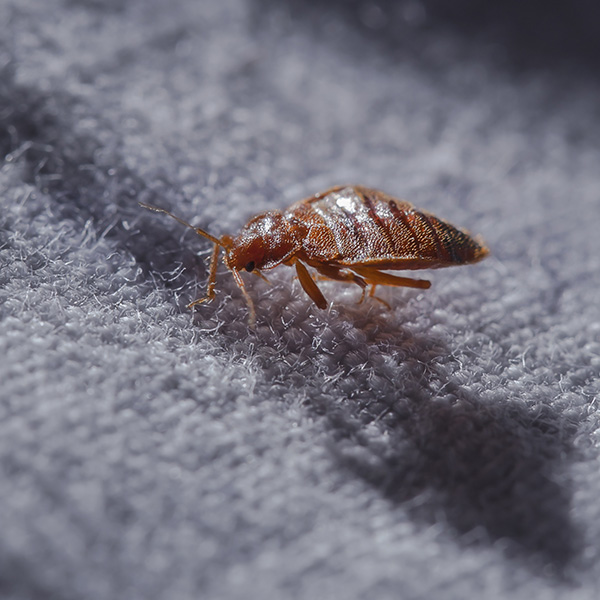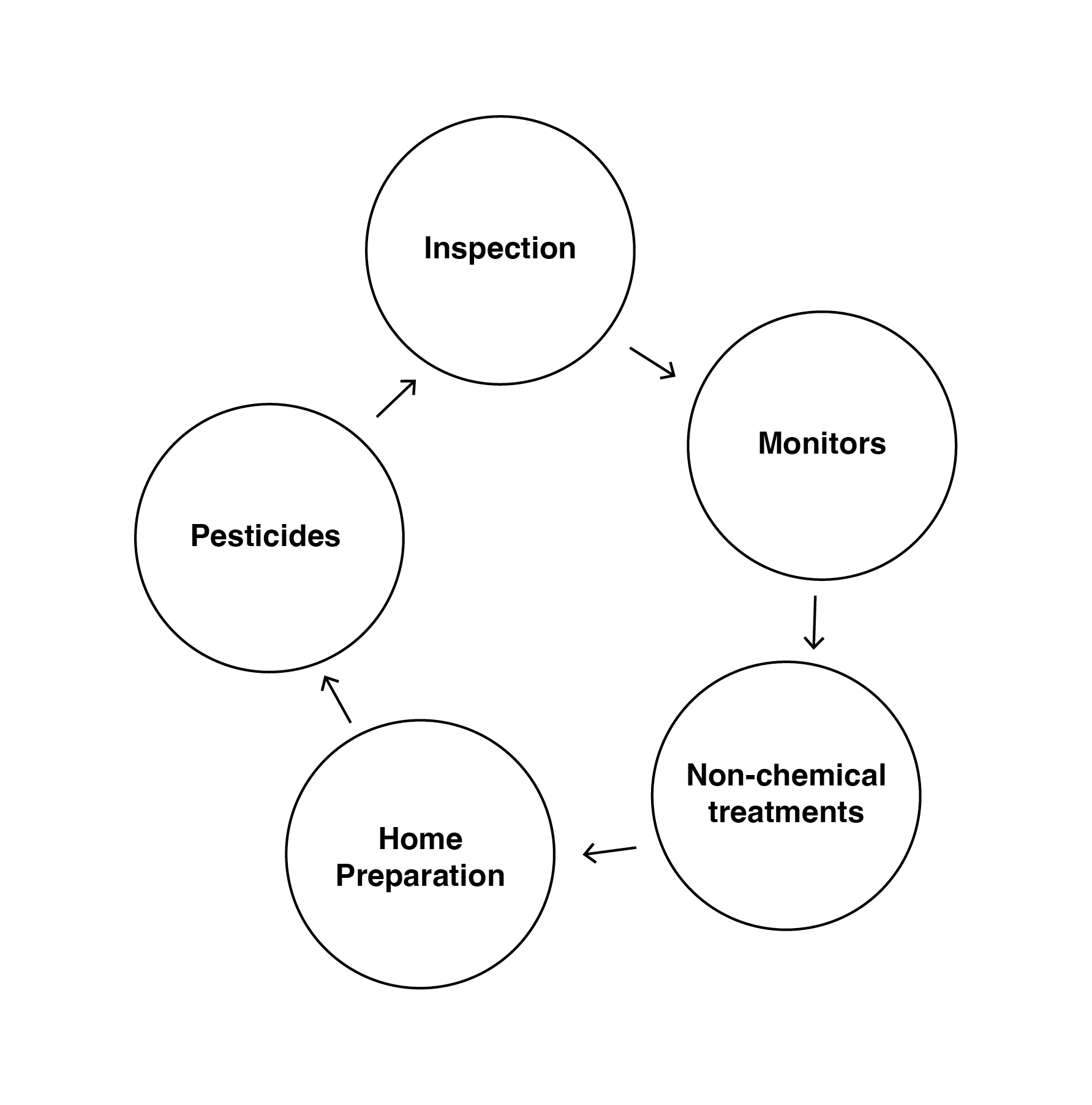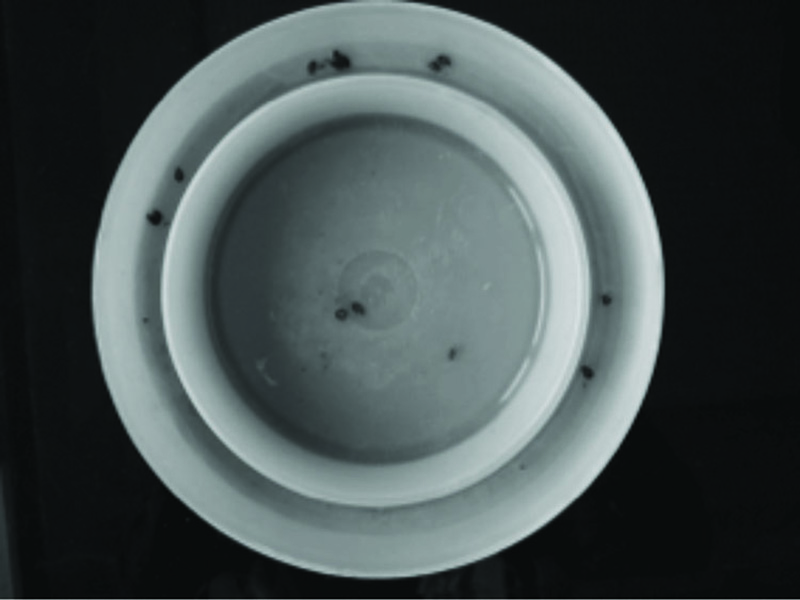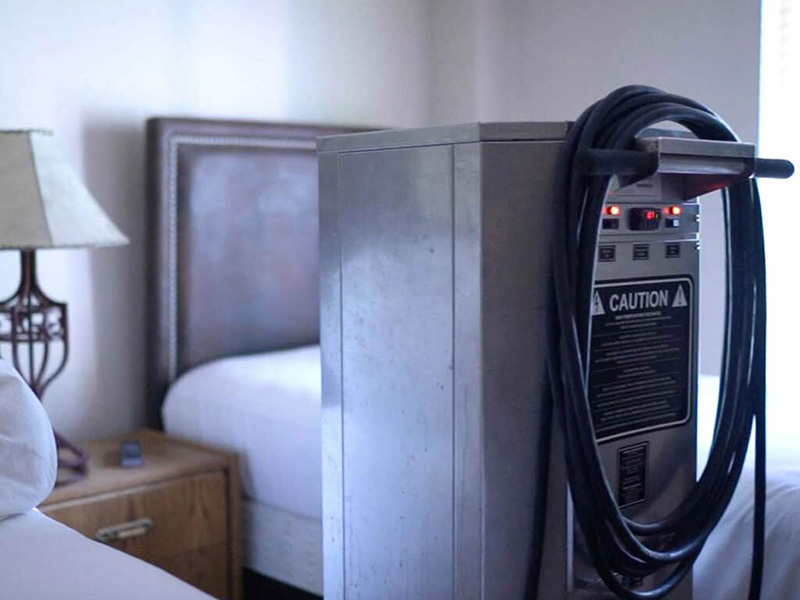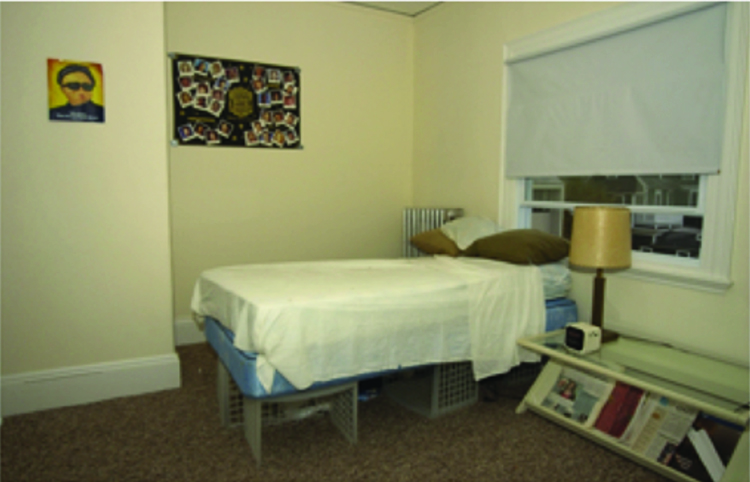Help! I Think I Have Bed Bugs!
So, you think you might have bed bugs? The first thing you need to do is have them identified. Catch a bug and put it in a SEALED container or a small vial with alcohol (so it won’t escape). Take the bug to your local Extension office for a positive identification. Many insects are mistaken for bed bugs, so you need to be certain you are actually dealing with bed bugs. Figures 1 to 5 depict what bed bugs look like.
If you have bed bugs, there is no need to be embarrassed. Any home can have bed bugs; even the nicest, most expensive home can become infested with bed bugs.
Eliminating bed bugs is difficult, but it’s not impossible. You do not need to throw all of your things away because most of them can be treated and saved. Throwing belongings out is unnecessarily expensive, will cause more stress and can actually spread bed bugs.
If you own your home, contact a qualified pest management professional. If you rent, notify the manager immediately Work with the housing manager and/or pest control company to set up a treatment program that includes non-chemical and chemical options. The faster you take action, the quicker things can return to normal.
Figure 1. Young and adult bed bugs.
Figure 2. Young bed bugs.
Figure 3. Adult bed bugs.
Figure 4. Bed bug.
Figure 5. Adult bed bug.
Methods of Control
The use of any single method is not likely to eliminate bed bugs from your home. A combination of methods is a must. The pest management professional or landlord can only do their part … you have to do yours as well! Diagram 1 will help you understand all of the methods that it will take to eliminate bed bugs from your home. As noted here, the first step is inspection. The last step is judicious use of pesticides by a pest management professional.
Diagram 1.
1. Inspection
Start inspecting areas where bed bugs might be hiding. Check the bed, box springs and headboard. Look behind pictures. Inspect chairs and other furniture that are commonly used. A thorough inspection will take a long time.
2. Monitors
Bed bugs can be hard to find! There are many different monitors available to help you detect bed bugs in your home. ClimbUpTM traps (Figure 6) can be placed under the legs of furniture. Sticky traps can also be purchased at your local grocery store and placed around the legs of furniture or under the bed.
Figure 6. ClimbUp® trap. Photo Courtesy of Susan McKnight.
3. Non-chemical treatments
A clean home will help reduce risk of bed bugs because they will have fewer places to hide. Bed bugs can hide in the tiniest places in the cleanest rooms! Removing clutter reduces the number of bed bug hiding places.
Purchase mattress encasements designed to seal the mattress and box springs from bed bugs. Mattress encasements serve two purposes. First, they trap the bed bugs already on the bed. Second, they keep new bed bugs from getting onto the mattress and box springs.
Vacuuming can help remove bed bugs, Make sure the infested vacuum bag is removed and thrown away outside.
Heat kills bed bugs. A clothes dryer can be used to kill bed bugs in infested clothing, bedding and stuffed toys. Fabrics such as bedding can be successfully laundered to kill bed bugs. Put potentially infested laundry in plastic bags while waiting to be washed. Place the laundry in a washing machine. Once the laundry is in the machine, take the plastic bags outside and throw them away. Wash laundry in the hottest water the fabric can tolerate. Then put laundry in a hot dryer for at least 30 minutes to eliminate bugs at all stages of their life cycle. After washing and drying, put clean laundry in NEW plastic bags that are bug-free and seal. This will prevent bed bugs from re-infesting your clean items.
A pest management professional will likely come into your home and use heat to help kill the bugs. Many pest control companies use portable heaters to treat for bed bugs (Figure 7). They will heat the house or apartment up to around 130 degrees F and hold that temperature for four to six hours. Depending upon the home or room, this could take between 10-16 hours to get the room up to temperature. Steam cleaners can also be used to heat treat bed bugs in furniture, bedding and other hiding spots.
Figure 7. Heat treatment in bedroom. Photo courtesy of EnviroPest®
4. Home preparation
Home preparation is one of the most important steps in eliminating bed bugs from the home.
Figure 8. Before room clean-up.
Figure 9. After room clean-up.
This is very important: Even in the neatest or cleanest room, there are many places that a bed bug can hide. In cluttered or messy rooms, bed bugs have many places to hide! Keeping a clean and organized home can help you notice problems more quickly! Figures 8 and 9 illustrate before’ and after room clean-up.
A pest management professional will ask you to prepare your home for treatment. Clean thoroughly to eliminate bed bug hiding spots (Diagram 2). Heatmust penetrate the infested items. If your home is cluttered, the heat cannot effectively penetrate all items and kill bed bugs. Reduce clutter and make certain the pest management professionals can move around your home. Use a tape measure to lay out walking areas. Are there 36-inch pathways into your home and around your furniture? If not, rearrange or discard items to make room. Pull furniture at least two feet from the wall.
A pest management professional can help you determine if a piece of furniture will need to be thrown away. If it is suggested that you throw a piece of furniture away, rip the fabric and damage the frame to make it unusable. This way, others will not pick up the item, take it to their home and have a case of bed bugs.
Keep the clutter from coming back. Keep a small discard box for items that are no longer useful. You can put them in the box to throw away. EMPTY THE BOX DAILY. Spend AT LEAST 15 minutes during the day picking up and putting things away.
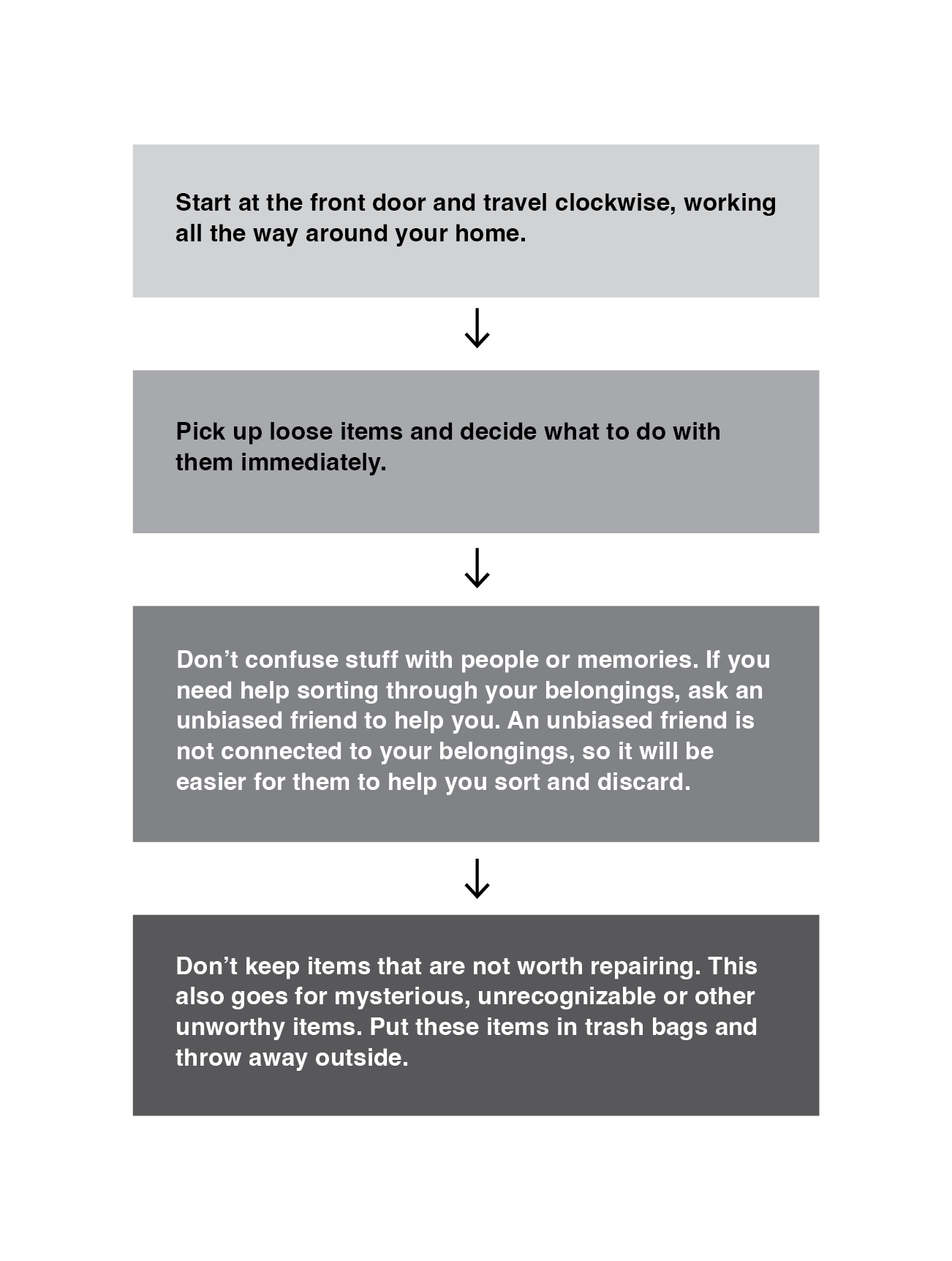
5. Pesticides
Over-the-counter pesticides are sometimes ineffective – we do not recommend that they be used for a do-it-yourself treatment. Bed bugs can be resistant to the ingredients in these products and may not be killed. Instead, a qualified pest management professional should be hired to tackle the problem. Pest management professionals will use sprays, dusts or aerosols known to eliminate bed bugs. Many products used by pest management professionals are formulated for specific types of applications, such as crack and crevice sprays, spot sprays or wall void applications. These products require application bya licensed applicator.Pestmanagement professionals are trained to use pesticides in the safest, most effective way possible.
A few words on what does not work:
Do not self-treat a bed bug infestation. Bed bug “home remedies” such as mothballs, or using fabric softening dryer sheets between the mattress and box spring DO NOT WORK! Often such home remedies will reduce the chance of obtaining effective control. You will only make the problem worse. If you are a homeowner, contact a pest management professional. If you are a renter, contact your landlord. Work with them, create a plan and get rid of the bed bug problem!
If you’ve had bed bugs more than once …
Here are a few reasons that might explain recurring infestations:
- Bed bugs continuously lay eggs. These eggs can hatch after the treatment and allow new infestations to establish because many chemical treatments do not kill bed bug eggs.
- Bed bugs are cryptic and like to hide. The pest management professional might not find all of the bed bugs during home inspection. Therefore hiding bed bugs and eggs may have survived treatment.
- Items infested with bed bugs are brought into the home after treatment. For example, if any belongings were removed prior to treatment and then brought back afterward, bed bugs would be re-introduced to the home.



